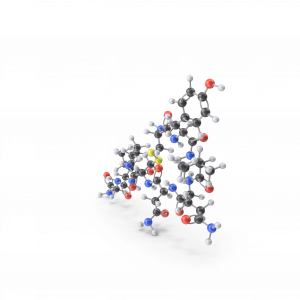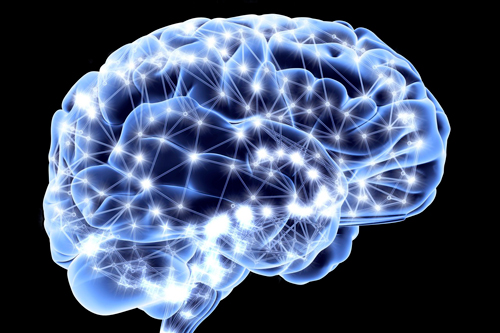Imagine you’re a kind, submissive sort of mouse. Feel your whiskers sense the temperature and surfaces of your environment. Swish your body-length tail around. Test out the strength of your legs. Now, imagine you’re dropped into a cage with aggressive mice, and despite your amazing ability to jump 18 inches, you experience what scientists call a “social defeat.” This would be a traumatic moment. For survival, among other purposes, your mouse brain has now recorded this event.
Catch your breath and then pretend it’s six hours later. Imagine you’re placed back in the same cage with the aggressive mice. Which scenario would you prefer: fearless, with no memory of the previous attack, or intensely, exaggeratedly fearful? I’m with you—the first option sounds so much better and, as recent research indicates, has everything to do with something we usually refer to as the “love hormone,” oxytocin.
“Social context affects the role oxytocin plays. While research is still ongoing in terms of oxytocin’s ability to intensify positive social memories, the Northwestern results demonstrate how effectively the hormone amplifies negative and stressful moments.” What you probably know about oxytocin is that it makes you feel warm and fuzzy and like you could just snuggle with that special someone all day. Released naturally during bonding activities (sex, childbirth, and breastfeeding, to name a few), oxytocin has traditionally been thought of as an agent of good feelings. In fact, it can be so powerful in making you feel good that studies suggest it can help people with autism and schizophrenia transcend social deficits. Some doctors even prescribe oxytocin off-label to treat patients for social unease.
Research from Northwestern University Feinberg School of Medicine published in Nature Neuroscience, however, shows that the love hormone isn’t always quite so loving. Lab tests with mice (whose brains share our high level of oxytocin receptors) reveal that oxytocin can actually increase the pain of stressful social situations and later trigger enormous fear and anxiety related to those moments. This is due to the way the hormone strengthens social memory in the brain and activates the fear response.
Put simply: Social context affects the role oxytocin plays. While research is still ongoing in terms of oxytocin’s ability to intensify positive social memories, the Northwestern results demonstrate how effectively the hormone amplifies negative and stressful moments. In the actual experiments (you are no longer the mouse, so heave a sigh of relief!), scientists divided mice into three groups: one missing oxytocin receptors, one with an increase in oxytocin receptors, and a normal control group. What the researchers found was that six hours later, when put back into the cage, the mice without receptors didn’t appear to remember the aggressive mice; they showed no fear. The mice with increased oxytocin receptors, however, exhibited a severe fear reaction and avoidant behavior.
A subsequent experiment modified what happened after the initial social defeat: Six hours later, the mice were placed in a box where they received a painless but startling electric shock. Twenty-four hours later they were placed in the box again but did not receive a shock. The mice without oxytocin receptors showed zero enhanced fear upon re-entering the box. Conversely, the control group showed average fear, and the mice with extra oxytocin receptors exhibited significantly magnified fear. These results led the senior author of the study, Jelena Radulovic, M.D., Ph.D., to conclude that “after a negative social experience the oxytocin triggers anxiety and fear in a new stressful situation.”
“With chronic social stress at the top of the list for causes of depression and anxiety, oxytocin may still hold the key to helping reduce symptoms for certain disorders.” In addition to recognizing the implication of negative social memory on future events, Dr. Radulovic’s team also identified the brain region responsible for these issues (the lateral septum, which plays a role in emotional and stress responses) and the pathway that oxytocin travels to amplify feelings of fear and anxiety. Specifically, researchers discovered that oxytocin triggers a key signaling molecule that remains activated for six hours following a negative social experience. Dr. Radulovic believes that this molecule, known as ERK (which stands for extracellular signal-related knases), stimulates the brain’s fear pathways, a large number of which travel through the lateral septum.
The Northwestern study was the first of its kind to link oxytocin to social stress and future increased fear and anxiety response. It’s not the first to display the darker side of the hormone, however. Researchers at Concordia’s Centre for Research in Human Development published other interesting oxytocin evidence in Emotion, a journal of the American Psychological Association. In their study involving healthy young adults with no signs of any anxiety or other disorder, participants were given measured doses of oxytocin and then asked to complete an emotion-identification accuracy test in which they examined and compared different facial expressions. The results quickly disproved psychologists’ expectations that oxytocin can overcome social anxiety. Instead, it seemed to provoke it, as the subjects with increased oxytocin levels saw increased emotional intensity on each of the faces they rated. As Christopher Cardoso, a doctoral candidate and the study’s lead author, explains, “Our study proves that the hormone ramps up innate social reasoning skills, resulting in an emotional oversensitivity that can be detrimental in those who don’t have any serious social deficiencies.”
If all this is starting to sound like the “bonding drug” hormone offers some serious downers to the bonding experience, it does. But oxytocin still remains a ray of hope when used appropriately in specific situations. Several recent clinical trials focus on oxytocin’s benefits and are testing its efficacy for use as an anti-anxiety drug. With chronic social stress at the top of the list for causes of depression and anxiety, oxytocin may still hold the key to helping reduce symptoms for certain disorders. Research teams are exploring its possible positive effect on treating anorexia (it’s been shown to decrease patients’ fixation on images of food or fat body parts) and even offering protection against addiction (the oxytocin system primarily develops in response to experiences; increasing its levels in childhood can reduce the pleasure of drugs and the intensity of stress later on).
Like everything when it comes to love, there’s a dark and a light side. Sometimes it’s good to feel more; other times it’s better to feel less. Each of us learns through romantic experiences that you have to choose wisely how, when, and in what way to engage your emotions. As they romance oxytocin, science and pharmacology will have to navigate a similar conundrum.



